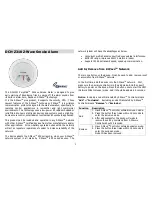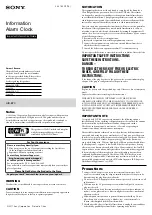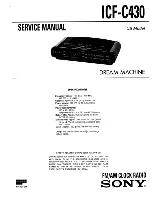
128-8190
6 of 8
Page 6
4. Within 10 seconds turn the ignition switch off, on, off, on, off, on.
(The siren or horn will beep and the lights will flash one time.)
5. Within 10 seconds, begin to press and release the PBLED switch to set the tenths digit.
(As per the example, press and release 5 times to set the tenths digit to 5)
6. Within 10 seconds of the last press of the pushbutton, turn the ignition switch off then on.
7. Within 10 seconds, begin to press and release the PBLED switch to set the units digit.
(As per the example, press and release 2 times to set the units digit to 2).
8. Turn the ignition switch to the off position. Immediately observe the LED flash pattern.
You will note the LED flashing five times, pause, and then flash two times, pause. This pattern will be
repeated three times indicating the new code (52) has been accepted and stored in memory.
Note:
If after step 7, the LED flashes a code other than what was just entered, this indicates
that the code has not been changed. You will have to repeat steps 1 through 7 above
being certain to note the following:
Acceptable digits 10ths or units are 1 through 9. The unit will not recognize a 0 (Zero), or no
digit entered in any place, units or tenths.
Note:
If 15 seconds of inactivity expire, or if the ignition switch is turned off for more then 5 seconds
during any of the above steps, the unit will revert back to the last successfully stored code.
MANUALLY OVERRIDING YOUR SYSTEM:
USING THE CUSTOM CODE OVERRIDE
Assuming the override code programmed has not been changed, and the default override
code of 11 is in the system's memory.
1) Enter the vehicle and turn the ignition switch to the on position.
Note:
The siren will sound.
2) Within 5 seconds, press and release the PBLED switch 1 time.
3) Within 5 seconds, turn the ignition switch off then on.
4) Within 5 seconds, press and release the PBLED switch 1 time.
5) Turn the ignition switch off then on and start the vehicle.
Note:
If you have changed the programmed override code then substitute your new code
tenths for step 2 above, and units for step 5 above.
ELIMINATING THE NORMAL ARM/DISARM CHIRPS
You can selectively eliminate the normal arm & disarm chirps by holding the transmitter button
slightly longer when arming or disarming. This will prevent the siren chirps for one arm or
disarm cycle. If you find this inconvenient and wish to eliminate these chirps permanently,
1. Turn the ignition switch 'on" then 'off".
3. Within 10 seconds of turning off the ignition, press and release the PBLED switch 3 times.
4. If the chirps were on before you started, the siren will emit 2 short chirps indicating that the
chirps are now off. If the chirps were off before you started, the siren will emit one short
chirp indicating that the chirps are now on.
Note:
If the vehicle battery is disconnected then reconnected, the unit will return to the
default setting of chirps on. Repeat the above procedure to eliminate the arm/disarm
chirps.
REMOTE PANIC OPERATION
The ARM or DISARM button on your keychain transmitter also functions as a panic switch for
use in emergency situations. To use remote panic,
1. Press and hold the ARM or DISARM button on the keychain transmitter for 3 or more
seconds. The alarm will immediately sound.
2. To stop the alarm, press and hold the ARM or DISARM button on the transmitter again for 3
seconds. If the button is not pressed, the alarm will automatically stop after 30 seconds.
Also if any transmitter button other than the ARM or DISARM button is pressed and
released, the Panic mode will be turned off immediately. The normal function of this
transmitter button will be suspended during the Panic sounding period.
3. During the panic mode, the Lock and Unlock buttons can be used to lock and unlock the
doors, (if the option is installed), however once the unlock/disarm button is pressed, the
vehicle's starter inhibit device, (where installed) will be disabled allowing the vehicle to
start.


























